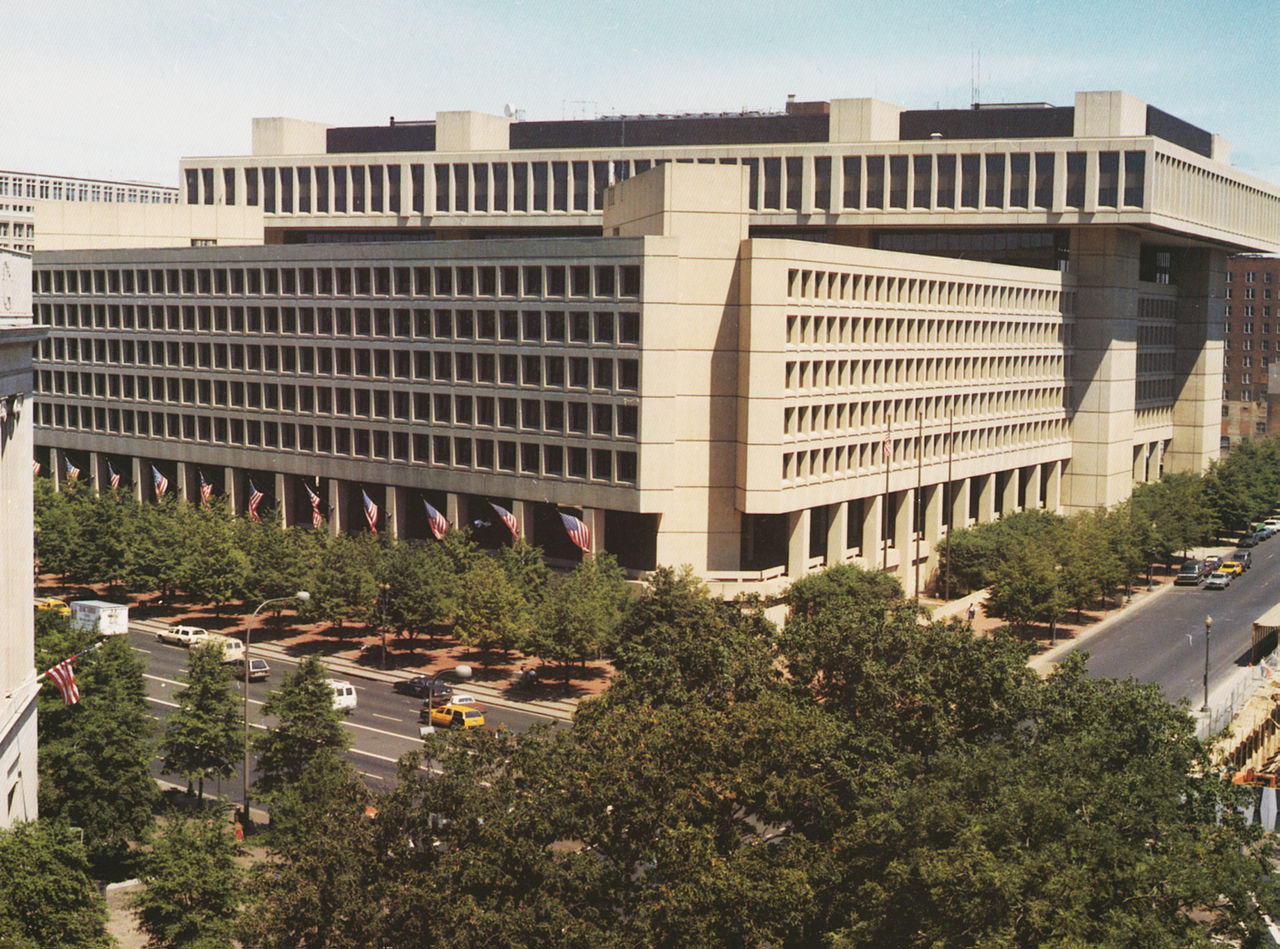
Virginia and Maryland lawmakers have renewed their respective pleas in recent weeks to host the new headquarters for the Federal Bureau of Investigation (FBI) six months after the FBI and the General Services Administration (GSA) began the selection process in September. GSA and FBI officials are expected to make a decision in the coming weeks.
Springfield, Virginia, Greenbelt, Maryland, and Landover, Maryland, are in the running for the final selection by the 115-year old agency, which employs approximately 35,000 people and is currently headquartered in downtown DC in the J. Edgar Hoover Building, designed by Charles F. Murray Associates. The Brutalist building, which spans two city blocks and more than 2.4 million square feet, was designed for about 7,000 employees. As the agency has grown to more than 35,000 employees nationwide, it has had to lease space in the metropolitan area (and beyond) for workers.
Square footage aside, the often maligned building is seen as outmoded and poorly maintained. A 2011 Government Accountability Office report cited more than $80 million in deferred repairs and improvements (the same year the GSA deemed it unusable). From a design perspective, deep floor plates have meant that few workers have access to natural daylight, leaks have plagued every corner of the building, and the structural requirements for its cantilevered floors have restricted office reconfigurations—especially on its upper floors.
The FBI hopes to create a flexible flagship property that’s more attuned to contemporary attitudes about worker health for its law enforcement agents and support staff. In its criteria for a new site, the FBI has incorporated the requirements of a 2021 Executive Order signed by President Biden for federal agencies to advance racial equity as an operational priority in how it invests its funds—especially if it can make an investment in underserved communities.
“The federal government should be applauded for their efforts to invest in underserved communities and we, as architects and design professionals, should help them as they move forward,” says Paula Loomis, FAIA, a member of the AIA Virginia Advocacy Advisory Committee. “Done well, federal projects not only provide employment opportunities, but weave their employees into the fabric and life of the neighborhood thus creating a community.”
Loomis, a public architect with 39 years of master planning, architectural design, construction management, and facility operations experience with the Department of Defense, Department of Homeland Security, and General Services Administration, points to other projects in the region that successfully demonstrate how agency objectives can be met while also being a community anchor. She points to the Ariel Rios Federal Building in Northeast DC, home of the Bureau of Alcohol, Tobacco, Firearms and Explosives, designed by Moshe Safdie Architects and completed in 2008—calling it a “catalyst” for the neighborhood including local businesses and housing.
Weighing the options
For the FBI and GSA, the scoring rubric for a new headquarters includes fulfillment of the FBI’s mission and access to key sites in the region (35 percent), access to transportation for its workers (25 percent), and the cost to acquire and develop the site (10 percent). Racial equity and sustainable siting comprise 15 percent of the weighted grades they will apply to the three sites under consideration, all of which are located adjacent to Metro stops.
Maryland lawmakers say that Greenbelt and Landover in Prince George’s County are uniquely situated to satisfy the agency’s racial equity requirement, with 61.2% of residents identifying as African-American. The county’s Economic Development Corporation also points out that its “500 square miles of opportunity” are already home to 15 federal agencies. At a press conference on February 15, Virginia lawmakers pointed to the Commonwealth’s growth and Fairfax County’s status as a favorable business environment cited by corporate giants Amazon, Boeing, and Raytheon as worthy dimensions of its eligibility. They also pointed to the “majority minority” demographics of Springfield, with nearly 60 percent of the population identifying as non-White, as a key credential.
When the FBI announces its choice, Loomis says it might be a fait accompli for the neighborhoods that were turned down, but it’s also the starting point for architects to steer the conversation about design and community development issues. Her recommendations? Public engagement sessions, becoming GSA peer reviewers, or working through GSA’s process to become architects for the new headquarters are all viable options for area designers hoping to make a difference.
“As GSA moves forward with any of the three sites,” says Loomis, “let’s ensure AIA architect involvement to make the most of the project and whichever community is selected.”
William Richards is a writer and the Editorial Director of Team Three, an editorial and creative consultancy based in Washington, DC.
